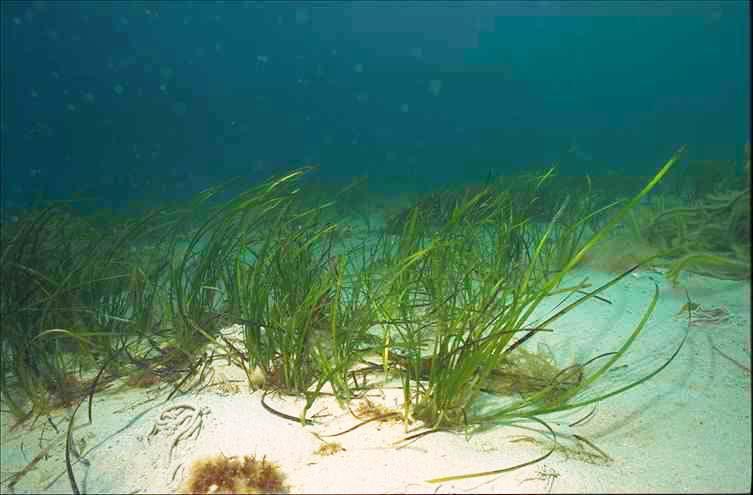Scottish Coastline Revival: Seagrass Planting Initiatives And Their Impact

Table of Contents
The Importance of Seagrass in the Scottish Ecosystem
Seagrass meadows are often referred to as the "lungs of the ocean," playing a vital role in supporting the Scottish marine environment. These underwater flowering plants are crucial for maintaining marine biodiversity, acting as nurseries for countless species of fish, shellfish, and other marine life. Their dense leaves provide shelter and food, contributing to a healthy and productive ecosystem. The benefits extend beyond supporting marine life. Seagrass meadows are exceptional at carbon sequestration, absorbing significant amounts of CO2 from the atmosphere and contributing to carbon capture efforts. Furthermore, their root systems help stabilize sediments, reducing coastal erosion and protecting our shorelines from the impacts of storms. This makes seagrass crucial for protecting our valuable coastal communities and infrastructure.
- Improved water quality: Seagrass acts as a natural filter, improving water clarity and reducing pollution.
- Habitat creation: Seagrass meadows provide essential habitats for a diverse range of species, from tiny invertebrates to larger fish and marine mammals.
- Coastal stabilization: The robust root systems of seagrass help prevent coastal erosion and protect against storm damage.
- Carbon sequestration: Seagrass meadows are highly efficient at absorbing CO2 from the atmosphere, mitigating climate change.
Ongoing Seagrass Planting Initiatives in Scotland
Several organizations and projects are leading the charge in Scottish seagrass restoration. These initiatives utilize various methods, including seed dispersal and transplanting of seagrass shoots, to re-establish lost meadows. The locations targeted for restoration vary, encompassing numerous bays and estuaries across Scotland.
- Project Seagrass: This organization is actively involved in multiple seagrass restoration projects across the UK, including several in Scotland. They focus on community engagement and scientific research.
- The Marine Conservation Society (MCS): MCS actively campaigns for seagrass protection and participates in monitoring and restoration efforts along the Scottish coast.
- Local community groups: Many local groups are undertaking small-scale restoration projects in their areas, contributing significantly to the overall effort.
Methods:
- Seed dispersal: Seeds are collected and then sown in suitable areas, allowing them to naturally colonize the seabed.
- Transplanting: Seagrass shoots are carefully removed from healthy meadows and transplanted to degraded areas.
Measuring the Impact of Seagrass Restoration
Monitoring the success of seagrass planting is crucial. Scientists employ a range of techniques including biodiversity surveys, water quality analysis, and remote sensing, to track the growth and expansion of restored meadows and assess the overall ecological impact. Initial results from several projects show promising signs of success.
- Increased biodiversity: Studies have shown a noticeable increase in fish and invertebrate populations in areas where seagrass has been successfully restored.
- Improved water quality: Restoration efforts have led to improved water clarity and reduced nutrient levels in some locations.
- Coastal protection: The restored seagrass meadows are showing positive effects in stabilizing sediments and reducing coastal erosion.
Challenges:
- Funding: Securing sufficient funding for long-term monitoring and restoration is an ongoing challenge.
- Climate change: The impacts of climate change, such as rising sea temperatures and ocean acidification, can hinder seagrass growth and survival.
The Future of Scottish Coastline Revival through Seagrass
The future of Scotland's coastline depends heavily on continued investment and commitment to seagrass restoration. This requires a collaborative effort involving government bodies, research institutions, conservation organizations, and the wider community. Public awareness campaigns are critical to highlight the importance of seagrass and engage the public in supporting these vital initiatives. Further research into innovative restoration techniques and the long-term impacts of climate change on seagrass is also essential.
- Increased government funding: Significant investment is needed to scale up restoration efforts and ensure their long-term sustainability.
- Community engagement: Involving local communities in restoration projects can increase public awareness and ensure the projects' long-term success.
- Technological advancements: Exploring innovative technologies for monitoring and restoring seagrass meadows is essential for maximizing efficiency.
Conclusion:
The Scottish Coastline Revival, spearheaded by numerous seagrass planting initiatives, holds immense potential for restoring our marine environment and coastal communities. Seagrass restoration offers multiple benefits, from enhanced biodiversity and carbon sequestration to improved coastal protection and sustainable economic opportunities. By supporting these projects—through volunteering, donations, or spreading awareness—we can all play a vital role in ensuring the long-term health of our coastline and the success of the Scottish Coastline Revival. Let's work together to protect and restore these vital seagrass meadows and safeguard the future of Scotland's stunning coastline. Get involved today and be a part of the seagrass planting movement for a healthier, more resilient Scotland.

Featured Posts
-
 Paddy Pimblett Calls Dustin Poiriers Retirement Decision Idiot Analysis
May 04, 2025
Paddy Pimblett Calls Dustin Poiriers Retirement Decision Idiot Analysis
May 04, 2025 -
 Stream Fox Live Cut The Cable Cord And Watch Your Favorite Shows
May 04, 2025
Stream Fox Live Cut The Cable Cord And Watch Your Favorite Shows
May 04, 2025 -
 Anna Kendrick And Blake Lively Body Language Speaks Volumes In Recent Interview
May 04, 2025
Anna Kendrick And Blake Lively Body Language Speaks Volumes In Recent Interview
May 04, 2025 -
 Kanye West And Bianca Censori Spanish Dinner Date After Split Claims
May 04, 2025
Kanye West And Bianca Censori Spanish Dinner Date After Split Claims
May 04, 2025 -
 Russell Westbrook Surpasses Kevin Garnett In Nba Scoring History
May 04, 2025
Russell Westbrook Surpasses Kevin Garnett In Nba Scoring History
May 04, 2025
